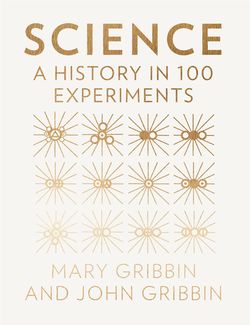Читать книгу Science: A History in 100 Experiments - John Gribbin - Страница 11
Оглавление| No. 6 | MEASURING INERTIA |
Galileo Galilei is famous for an experiment he did not carry out – but it was a real experiment, inspired by his work. He was Professor of Mathematics in Padua from 1592 until 1610, and during that time he worked in mechanics and astronomy as well as mathematics.
To put Galileo’s achievements in perspective, at the time he was working there were many people – educated people – who thought that a bullet fired horizontally from a gun, or a ball fired from a cannon, would fly a certain distance in a straight line, then stop and drop vertically to the ground. It was Galileo who first appreciated that the trajectory followed when a bullet is fired from a gun, or when an object such as a ball is thrown up in the air, is a parabola – and he carried out tests to prove this.
© New York Public Library/Science Photo Library
Nineteenth century illustration showing a glamourised version of Galileo’s experiment rolling balls down inclined planes. Although the scene depicted is fictional, Galileo really did carry out such experiments.
Among the many experiments he carried out in the years around the turn of the century there was a series of studies in which he rolled balls with different weights down inclined planes. He timed how quickly the balls moved using his pulse, and reached two important conclusions. The first was that the ‘natural’ state of a ball rolling off the slope was to continue horizontally (literally ‘towards the horizon’), unless it was stopped by friction. Without friction, he reasoned, the ball would roll on forever. This was an early insight into what Isaac Newton, following Robert Hooke, developed as his ‘First Law’ of mechanics, that an object stays at rest or moves in a straight line at a steady speed unless it is acted upon by an outside force.
Galileo’s second discovery was that the speed with which the balls rolled down the slope did not depend on their weight. For any particular slope, it took the same amount of time for any of the balls to get from the top to the bottom. This applied no matter how steep he made the slope. So he concluded – without actually dropping things vertically – that, apart from the effects of wind resistance, all falling objects would accelerate downwards at the same rate.
This infuriated some of his colleagues, philosophers of the old school who believed that Aristotle, who said that heavy objects fall faster than light objects, could not be wrong. So, in 1612, two years after Galileo moved from Padua to Pisa, one of them really did drop two weights from the leaning tower in a public demonstration intended to prove that Aristotle was right. The balls hit the ground very nearly at the same time, but not exactly. The Aristotelians said that this proved Galileo was wrong. But Galileo had an answer: ‘Aristotle says that a hundred-pound ball falling from a height of one hundred cubits hits the ground before a one-pound ball has fallen one cubit. I say they arrive at the same time. You find, on making the test, that the larger ball beats the smaller one by two inches. Now, behind those two inches you want to hide Aristotle’s ninety-nine cubits and, speaking only of my tiny error, remain silent about his enormous mistake.’4
Among other things, this true story highlights the power of the experimental method. If you carry out an experiment honestly, it will tell you the truth, regardless of what you want it to tell you. The Aristotelians wanted to prove Galileo was wrong, but the experiment proved he was right – within, as we would now say, the limits of possible experimental error.
By 1612 Galileo was nearly 50, and his days as an experimental physicist were essentially over. His famous clash with the Church authorities in Rome did not take place until the 1630s, and led to his spending his final years, from 1634, under house arrest at his own home (a relatively lenient sentence considering that he had been forced to confess to heresy). There, he summed up his life’s work on mechanics and promoted the scientific method pioneered by Gilbert in a great book, Discourses and Mathematical Demonstrations Concerning Two New Sciences, usually known as Two New Sciences, published in 1638 in Holland. The book was enormously influential, the first real scientific textbook, and an inspiration to scientists across Europe – except, of course, in Catholic Italy, where it was banned. As a direct result, from being a leading light in the scientific renaissance, Italy became a backwater, while the real progress was made elsewhere.
